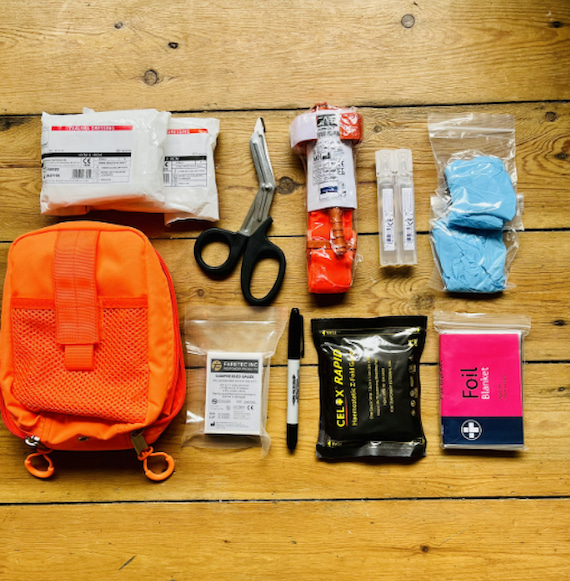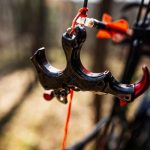An IFAK, short for Individual First Aid Kit, was originally designed for soldiers who needed life-saving medical tools within arm’s reach during combat. Compact yet powerful, these kits were created to stop severe bleeding and stabilize injuries like gunshot wounds before professional help arrived. Over time, their practicality and effectiveness have made them a go-to piece of gear far beyond the battlefield.
Today, you can find IFAK bags strapped to the packs of hikers, tucked into the cars of everyday drivers and carried by first responders who know that quick access to medical essentials can change the outcome of an emergency. Whether you’re outdoors, on duty, or simply prepared for the unexpected, having one of these kits close by means you’re ready to act when every second counts.
Why You Need One
You might think that a tactical IFAK pouch is something that only soldiers or medics need, but every household, driver and adventurer should benefits from having one at hand. The truth is, emergencies rarely give you time to prepare. When they happen, being equipped can make a big difference. Studies have shown that nearly 40% of pre-hospital deaths could have been prevented with basic first aid. That means having the right tools can save lives.
Individual First Aid Kits, or tactical IFAK pouches, are compact, easy-to-carry medical pouches designed for quick response in emergencies. Whether you’re at home, on the road, or miles deep into the wilderness, having one nearby allows you to act fast when every second counts. In situations where heavy bleeding occurs, for example, even a few minutes can be decisive between life and death.
With an IFAK, you can control blood loss, stabilize injuries and buy enough time for professional help to arrive. It’s especially valuable for outdoor enthusiasts, hunters, hikers, campers, or anyone who ventures off the beaten path, where help isn’t always immediate. Having a pouch like this gives you more than just first aid supplies. It also gives you confidence, readiness and a fighting chance when the unexpected happens.
What’s an IFAK Kit Comprised Of?

What goes inside an IFAK bag can vary quite a bit depending on where it will be used, who’s using it and how much training that person has. A professional medic might carry more advanced gear, while someone keeping one in their car or hiking bag may stick to the essentials. No matter the setup, though, the goal is to have the right tools close by when seconds matter, which are:
- Tourniquet: This is arguably the most critical piece of equipment in IFAK pouches. A tourniquet is used to stop severe bleeding from a limb. It buys crucial time until medical help arrives. Windlass-style tourniquets like the CAT or SOFTT are widely used for their reliability but do require some training to use correctly. Easier-to-apply versions, such as the SWAT-T, are great for beginners and can still do the job effectively. Whichever you choose, it’s worth practicing with it so you’re confident in using it under pressure.
- Wound packing or hemostatic gauze: For deeper wounds, packing the injury with gauze and applying pressure can be lifesaving. Basic gauze works through compression, while hemostatic options like Celox Rapid or QuikClot include clotting agents that speed up the process. The latter are pricier but can make a significant difference in stopping major bleeding.
- Trauma or pressure dressing: After the wound is packed, a pressure dressing holds everything in place and adds another layer of compression. The well-known “Israeli Bandage” combines multiple features, like a primary dressing, pressure bar and secure closure.
- Trauma shears: When every second counts, trauma shears make it easy to cut away clothing quickly without causing further harm. They’re safer and faster than trying to tear fabric or use ordinary scissors.
- Nitrile gloves: Gloves are essential for both hygiene and protection. They prevent contamination of the wound and protect the responder from potential exposure to blood-borne pathogens.
- Rescue blanket: Shock and hypothermia can set in quickly after severe blood loss. A compact foil blanket can help regulate body temperature, while higher-end versions, like active-warming blankets, can even generate heat on their own.
Other helpful additions include chest seals, medical tape, plasters and CPR face shields. The most important thing isn’t how many items your IFAK has, but how easily you can reach them when it counts. In an emergency, accessibility can be just as important as the contents themselves.
What You Should Put in Your Kit
It all starts with how much gear you plan to carry and where you intend to store it. The key is keeping it compact, organized and easy to reach. In an emergency, every second matters and you don’t want to waste time digging through a cluttered bag or trying to remember where you placed your tourniquet.
The best setups allow for quick access, whether the kit is attached to your gear, kept in your car, or tucked into a backpack pocket. If portability and waterproof protection are priorities, vacuum-sealed pouches like the ACT-PAK kits are an excellent choice. They’re lightweight, easy to store and remain sealed until the moment you need them.
For those who prefer to keep their kit attached to their person, options like the UCR IFAK Pouch work well. It can be securely fastened to your belt or bag using MOLLE webbing, making it instantly accessible in high-pressure situations. There are also compact pouches, such as the Individual Emergency Pouch, designed to open wide for fast access while staying small enough not to get in your way.
For public or shared environments, accessibility becomes even more important. Just like defibrillators have become common in public spaces, strategically placing IFAK kits where people can easily find and use them can save lives. Larger kits are ideal for workplaces, schools, or event venues. They’re built for rapid deployment in high-risk or crowded areas.


